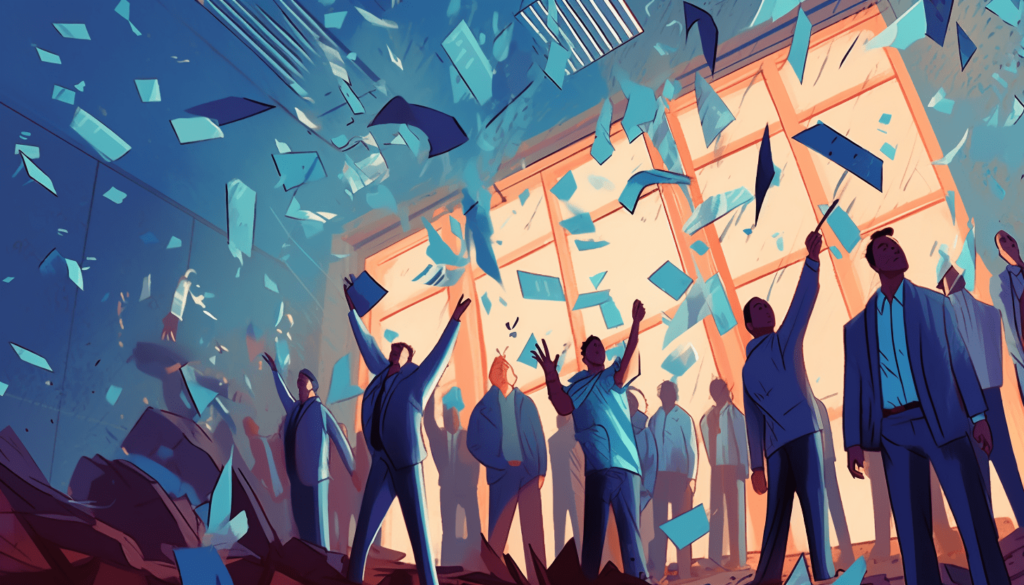Non-fungible tokens (NFTs) have emerged as an innovative and exciting solution for digital ownership and asset management. Built on smart contract standards like ERC721a, NFTs enable creators, collectors, and users to tokenize and trade unique digital items with real-world value. As the NFT ecosystem continues to expand, the future of ERC721a contracts and NFT technology holds a plethora of possibilities and opportunities for creative and practical applications.

Innovative Use Cases and Market Expansion
While NFTs are currently widely known for digital art and collectibles, the potential for ERC721a contracts and NFT technology extends beyond these use cases, driving innovation across various industries.
Emerging use cases for ERC721a contracts and NFTs:
- Real estate: Tokenizing physical properties or even virtual land, allowing for fractional ownership and simplified trading of real estate assets
- Gaming and virtual worlds: Integrating NFTs into video games or virtual worlds, enabling unique and customizable in-game items, virtual fashion, and digital experiences
- Digital identity and reputation: Using NFTs to verify digital identities, manage online reputations, and even tokenize social media influence for trading or monetization
Technological Advancements and Improved Scalability
As interest in NFTs and ERC721a contracts grows, ongoing technological developments aim to improve the overall user experience, scalability, and efficiency of token creation and trading.
Upcoming technological advancements:
- Ethereum 2.0: The forthcoming Ethereum network upgrade promises to enhance scalability, reduce transaction costs, and boost overall performance, paving the way for more accessible and widespread adoption of ERC721a contracts and NFTs
- Layer 2 solutions: Scaling solutions like Immutable X, Polygon, and Optimism are making progress towards more efficient and cost-effective NFT creation and trading by reducing network congestion and gas fees on the Ethereum platform
Integration with Decentralized Finance (DeFi) Platforms
As DeFi platforms and services continue to garner extensive support and interest, the convergence of NFT technology with DeFi platforms holds the potential to unlock new opportunities for asset management, borrowing, and lending.
The intersection of NFTs and DeFi:
- Fractional ownership: Enabling ERC721a-based NFTs to be broken into smaller fractions, making high-value assets more accessible to a wider range of investors
- NFT lending and borrowing: Pioneering platforms could facilitate NFT-backed lending and borrowing, providing additional liquidity and earning opportunities for NFT holders
- NFT-based yield farming: Earning rewards or interest in DeFi protocols by staking or providing liquidity with ERC721a NFTs as collateral or liquidity pool assets
The Role of Regulation in the NFT Ecosystem

As the NFT market continues to experience rapid growth, the need for regulation and governance is becoming apparent. Though navigating the regulatory landscape can be complex, an appropriate and balanced regulatory approach can foster a more secure, transparent, and sustainable NFT ecosystem.
The evolving regulatory landscape:
- Intellectual property rights: Determining the appropriate protection and enforcement of digital ownership and licensing through NFTs
- Taxation and reporting: Ensuring tax compliance by NFT creators, collectors, and traders, as well as providing clarity on taxable events associated with NFTs
As the world of NFTs and ERC721a contracts continues to flourish, the potential for expansion and innovation in technology, use cases, and market opportunities is vast.
Collaborations, Cross-Chain Interoperability, and NFT Standards
As NFT technology evolves, increased collaboration and interoperability between different blockchain networks and ecosystems will likely play a crucial role in the future of ERC721a contracts and NFTs.
Cross-chain interoperability and NFT standards:
- Cross-chain bridges: Developing solutions to enable seamless trading and management of NFTs across multiple blockchain networks, broadening the scope and reach of NFT technology
- New NFT standards: Exploring the creation of universal NFT standards that can be easily adopted and integrated with various platforms, improving the interoperability and compatibility of digital assets within the broader blockchain ecosystem
In Conclusion

The future of ERC721a contracts and NFT technology holds a wealth of opportunities for innovative use cases, market expansion, technological advancements, and integration with existing platforms and industries. By staying informed about the evolving NFT ecosystem and embracing the latest tools and applications, developers, creators, and users can shape the growth and adoption of NFTs and help guide the development of this dynamic and infinitely promising digital landscape.
